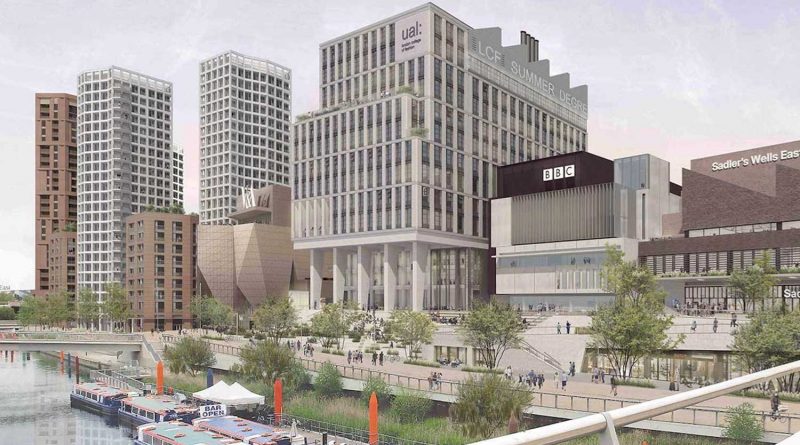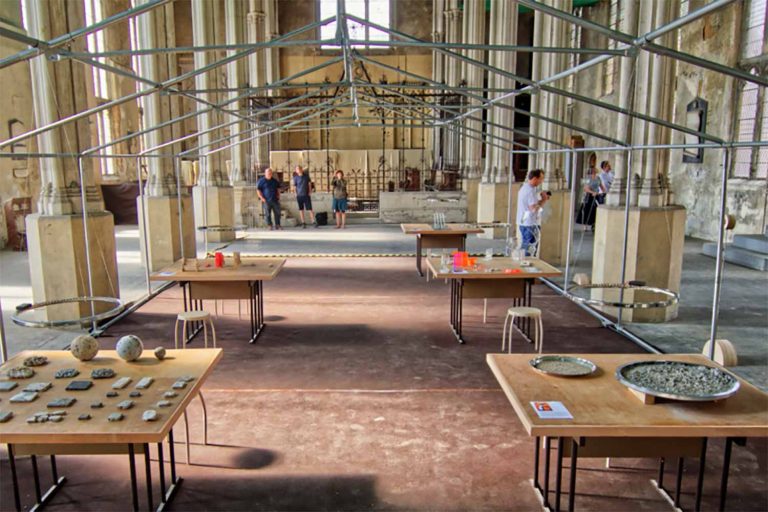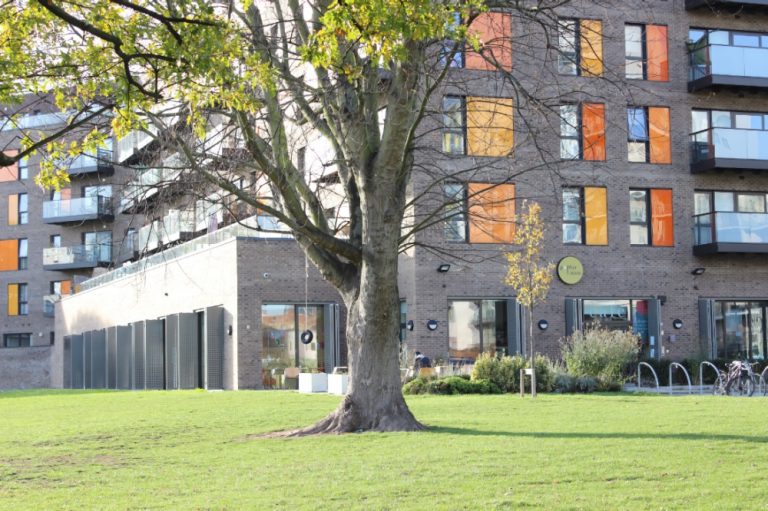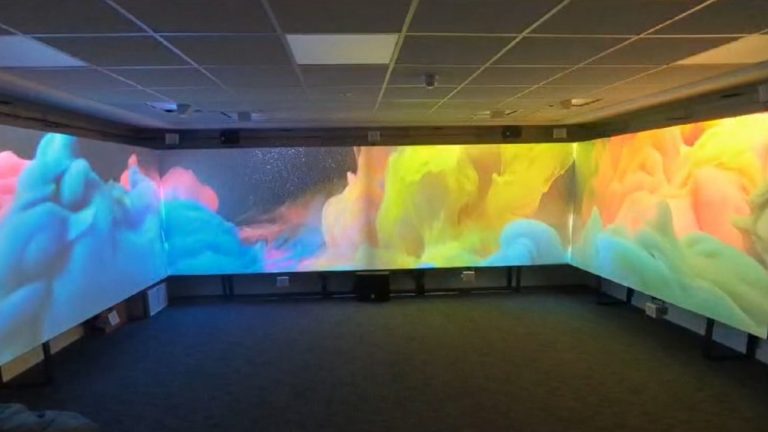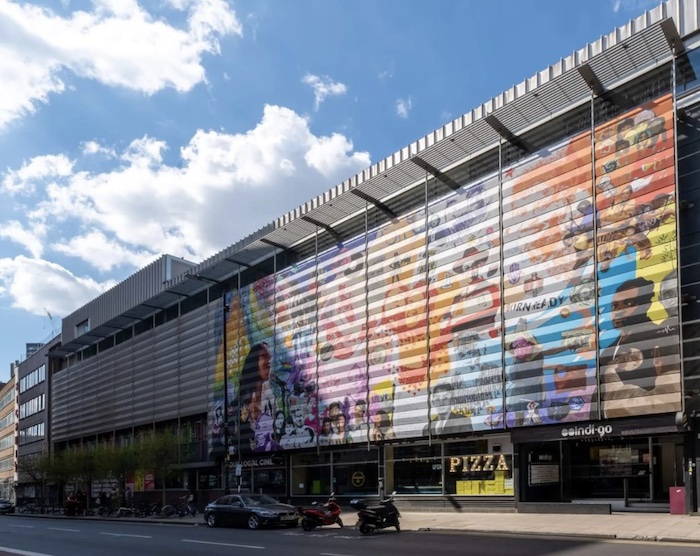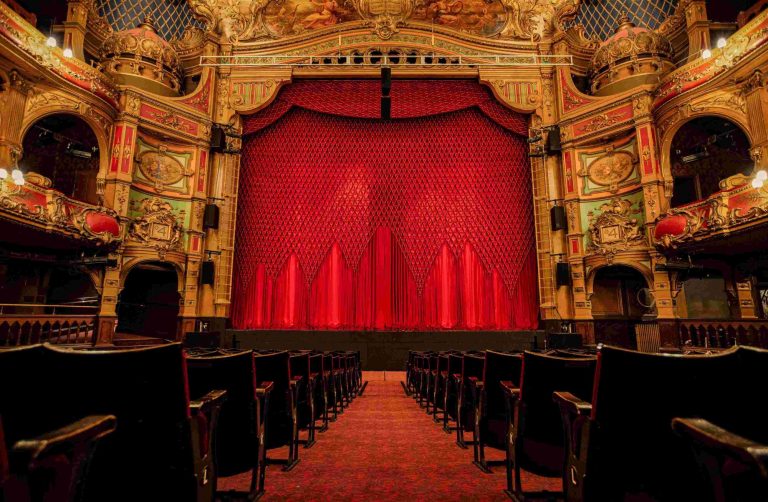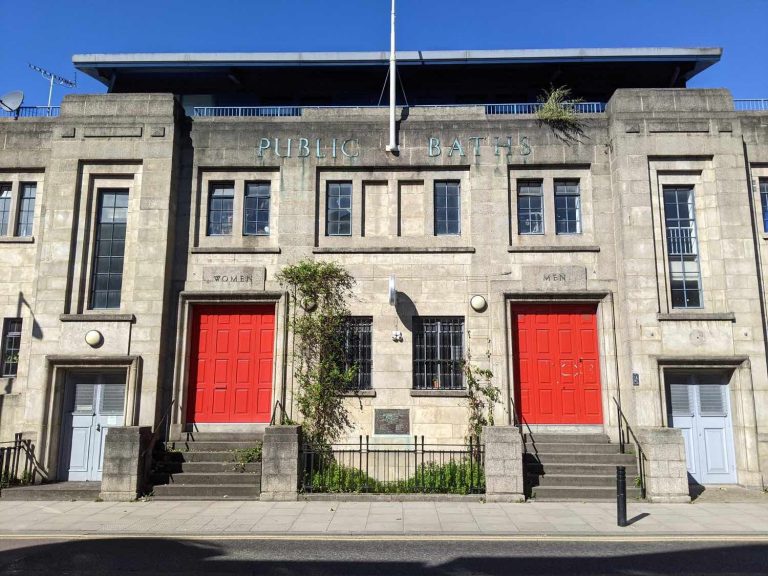Everything you need to know about East Bank
From sporting excellence to a cultural and educational hub, East Bank is laying the foundations of a creative wave soon to hit East London.
Just a year after the Olympics ended, it was decided by the powers that be that the Queen Elizabeth Olympic Park and its surrounding area would be transformed once more from a world-class sporting centre to a cultural, business, and educational district. It’s working title? Olympicopolis.
Coined by the then Mayor of London Boris Johnson, it was chosen after his love of classical Greece and Rome and as an echo to South Kensington museum’s quarter’s moniker ‘Albertopolis’. But, somewhat unsurprisingly, it didn’t quite fit the East End vibe.
Thankfully, that was also the conclusion that the new Mayor of London Sadiq Khan and his team came to in 2018. They ditched the six-syllabled tongue-twister and rebranded the area a much simpler and less cumbersome term, East Bank.
East Bank is a mammoth £630m development and is largely funded by the Mayor of London. The Park’s development corporation The London Legacy Development Corporation (LLDC) is overseeing the construction of one of the sites (yes, there a few!) and received money from the Department for Levelling Up, Housing and Communities to secure the area’s ‘long-term legacy [of] creating a powerhouse for artistic excellence, learning, research, performance and exhibitions’.
Spread across three sites, the bulk of East Bank is located by a waterfront. Although to be fair, it is hard to avoid the area’s criss-cross network of rivers, canals, and tributaries, contributing to the Park’s island-like quality.
Called the Stratford Waterfront, it is sandwiched between Waterworks River, which flows into the River Lea to join the Thames, and Carpenters Road. It is here that cultural and creative heavyweights are laying their foundations. Cranes, cement, steel, and glass clang in unison, creating the sing-song chimes of the emerging centres for the BBC, Sadler’s Wells, the V&A, and London College of Fashion.
Just south of the Aquatics Centre, is the second site that will hold world-class University College London’s (UCL) new east London campus. And, further north, at Here East, is the V&A’s new collection and research centre, and an existing space for UCL.
The designers in charge of the build are London-based architect firms Allies and Morrison, and O’Donnell + Tuomey. Adding a splash of Mediterranean modernity, Spanish firm Arquitecturia is also involved.
Never in the history of the East End, have we had such global cultural brands rooting themselves so firmly and resolutely in our soil. Names, traditionally associated with London’s famous West End, are either creating new organisations on a par with their original or, in the case of London College of Fashion, moving the organisation wholesale to the East End.
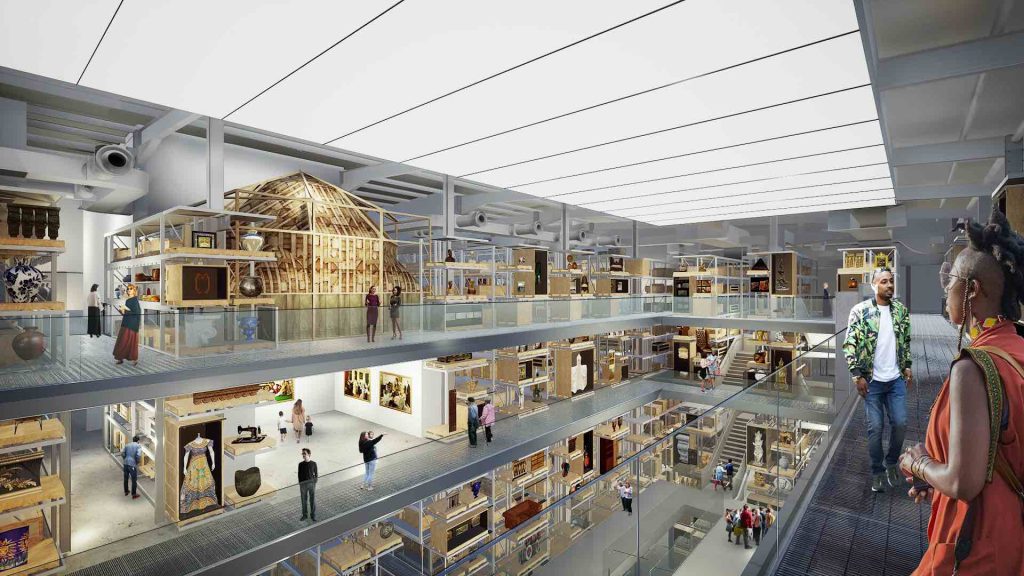
For the V&A, this will be its second foray east. As its Young V&A in Bethnal Green is undergoing a full-scale renovation, its Stratford Waterfront site is being designed from scratch. Here, the museum will explore the V&A’s renowned collection, which will include a curated space for exhibitions and gallery displays.
Its sister museum is V&A Storehouse over by Here East, in the same building as UCL and BT Sports Studios. This will house a three-storey section of Robin Hood Gardens. Built in 1972 and located in Poplar, Robin Hood Gardens is an internationally recognised example of Brutalist architecture and was the first Brutalist architecture Poplar. It is now being demolished but V&A acquired part of this landmark building and, after a painstaking 1,000 hours of refurbishment, it will hold this nine-metre edifice in its atrium.
An icon of theatre-land, the 350 years old institution that is Sadler’s Wells is building a 550-seat theatre, six large dance studios, a fancy roof terrace, and community space for local dance groups to use. But, it’s the Hip Hop Theatre Academy, which is its unique offering. Aimed at 16 to 19 year olds, it offers a two-year intensive training course to grow the next generation of hip-hop artists. Classes will include breaking, hip-hop dance, rapping, DJing, and graffiti. It is the first of its kind in the country.
Critics have said that Sadler’s Well’s choice of hip hop for the East End plays into cultural stereotypes however, in light of the recent news that breakdancing, an acrobatic element of hip hop dance, has been added as an Olympic sport for 2024, this seems apt for the legacy of our Olympic park.
Aside from that, another interesting feature is Sadler’s Wells’ building which is taken from 19th-century inspo. Built in brown-red brick mixed with sleek glass and topped with a saw-tooth roof, it is evocative of the area’s industrial heritage.
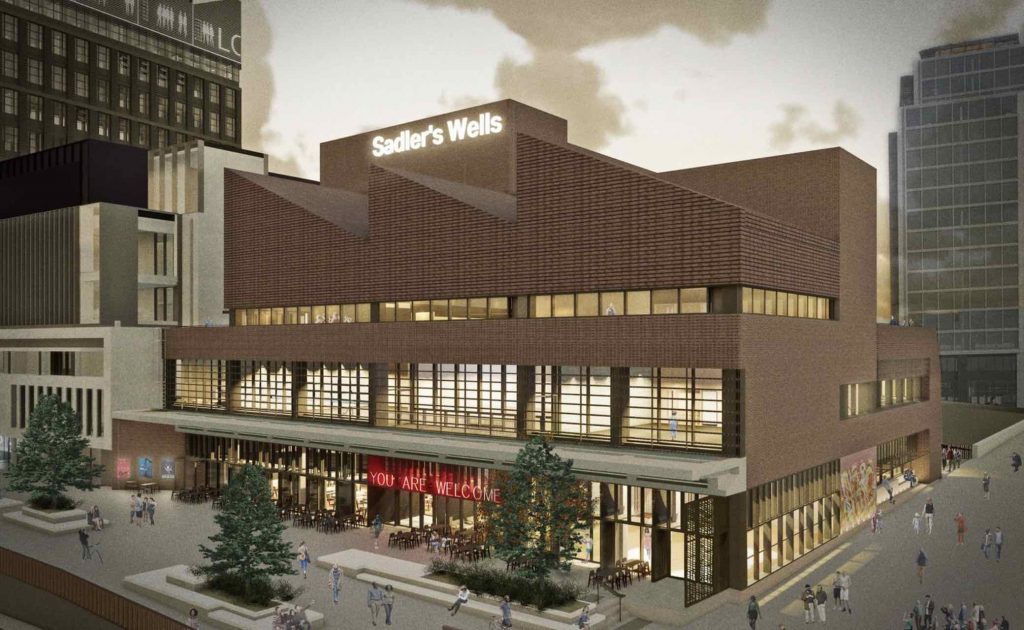
From the north side of the Aquatic Centre we travel south, where UCL opens its doors in September 2022.
Opening eleven new departments, it is the biggest development in the university’s 200-year history. New centres include the People and Nature Lab, the School for Creative and Cultural Industries, and the Department of Robotics (we have a feeling this might be a little more sophisticated than Robot Wars).
There is also the rather alarming-sounding Advanced Propulsion Lab. But don’t worry, this is just academic speak for the team who will decarbonise the transport sector and find alternative energy sources (wow).
As if East Bank isn’t 21st century enough, it’ll also hold the title of the UK’s tallest university in the form of the new London College of Fashion campus at almost 90 metres high. Apart from the ArcelorMittal Orbit down the road, it’ll be the tallest skyline in East Bank. It also has received an Oustanding BREEAM award for the building’s sustainable credential. It is using recycling concrete and has committed to buying 100% renewable electricity.
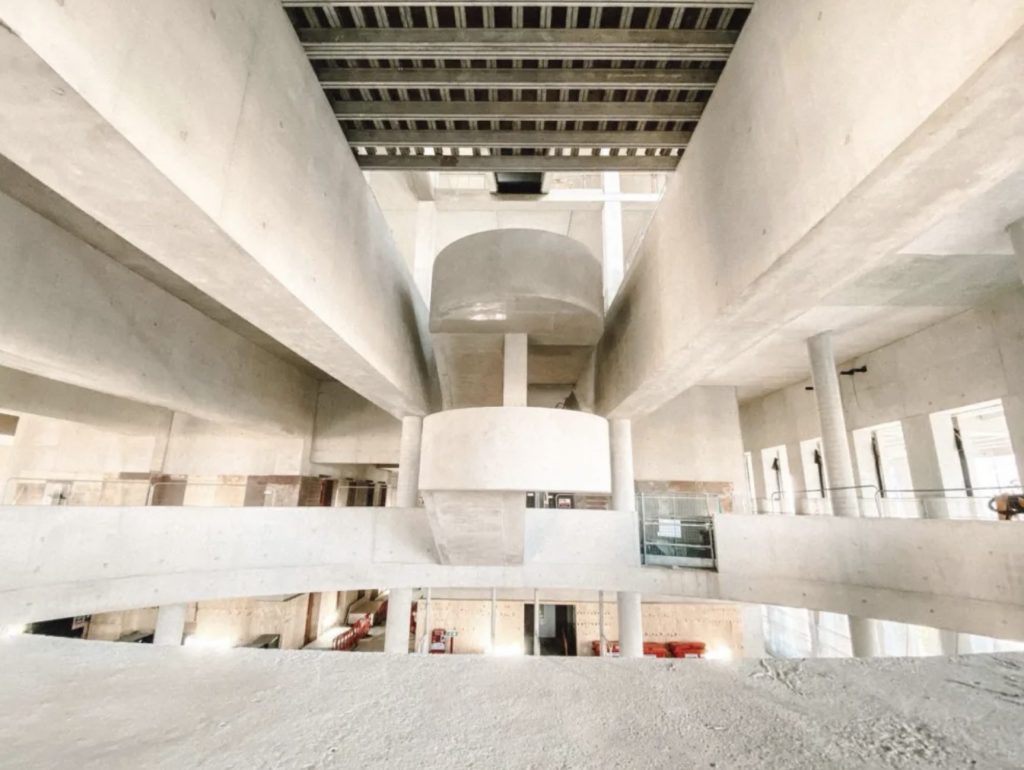
The College combined its six sites across London, even giving up its envious vantage at Oxford Circus, and placed all its eggs into the East End basket.
It could be said that the College’s natural home is here in the East End. East London has a long-standing connection with the fashion world. It was home to cloth dyeing and silk weaving in the 18th century. By the 19th century, it was the capital’s garment-making hub. This all helped to secure one small but growing market’s place in fashion history: one mile west, Roman Road market became the place to go for big beauty and the best of fashion.
If the best and brightest in art, theatre, education, and fashion weren’t enough, East Bank will also have the BBC’s Music Studios.
The BBC has an international reputation for showcasing some of the best of British musical talent, from supporting aspiring young musicians through its BBC Young Musician of the Year Award, to its riveting BBC Proms in the prestigious Albert Hall.
To say we will be spoilt for choice is an understatement. As one reader commented on the new developments in the East End, it is ‘moving the heart of London to East London.’ So, instead of catching the number 8 bus to head west into town for a night out, walk east for your date at Sadler’s Wells, or catch the latest exhibition at the V&A with your bestie. And then, under the twinkling stars in the inky sky, take a stroll back along the canal. Little else in London can top that.
It is often the way that the feverish excitement of something new clouds its flaws. Criticism has been levelled against the Park and East Bank development for how it pushed out existing businesses and trades which previously employed 5,000 people. Communities were also pushed out including a Traveller community as well as a low-cost cooperative housing.
In addition, the project is over budget by a whopping £150m, from £385m to almost £630m.
These are valid points and need to be considered against the sheen of when East Bank glows. But, even with that, to say to friends, ‘Let’s head to East Bank’, sounds far catchier, and far easier to say, than the tongue-twister ‘Olympicopolis’. We have a feeling we will ‘head to East Bank’ a lot in the coming years.
What is opening when?
The whole East Bank caboodle is set to be completed by 2025. Below is timeline of what is scheduled to open when:
September 2022 UCL East at Pool Street
2023 UCL Marshgate
2023 London College of Fashion
2023 Sadler’s Wells East
2024 V&A East Storehouse
2025 V&A East Museum
2025 BBC Music Studios
If you enjoyed this article, please read our piece on the new Elizabeth Line.

